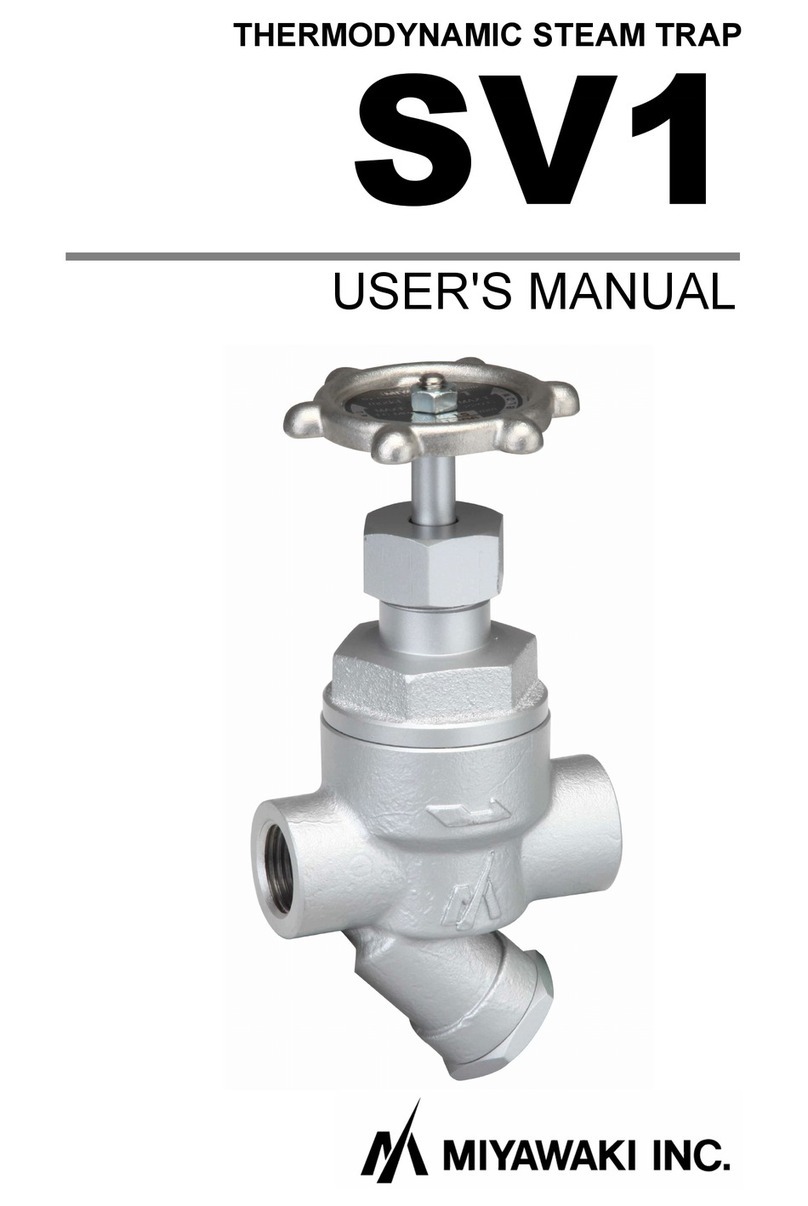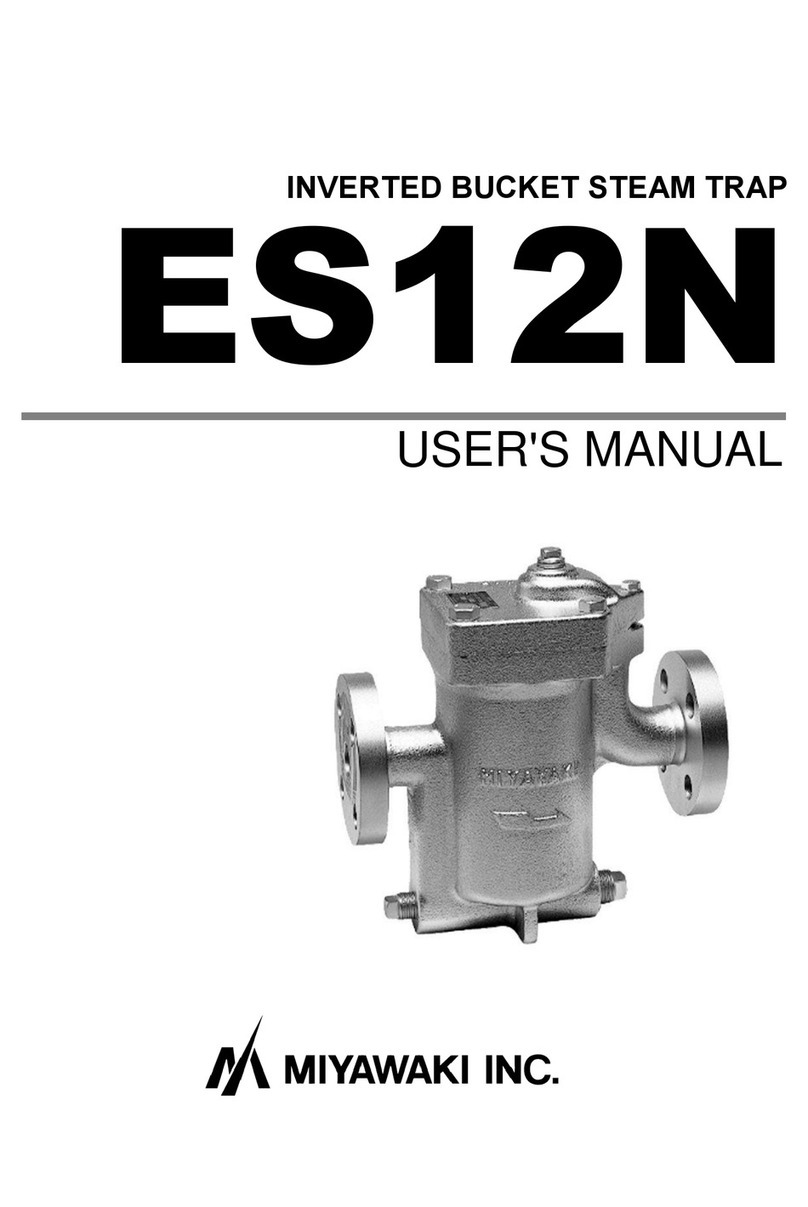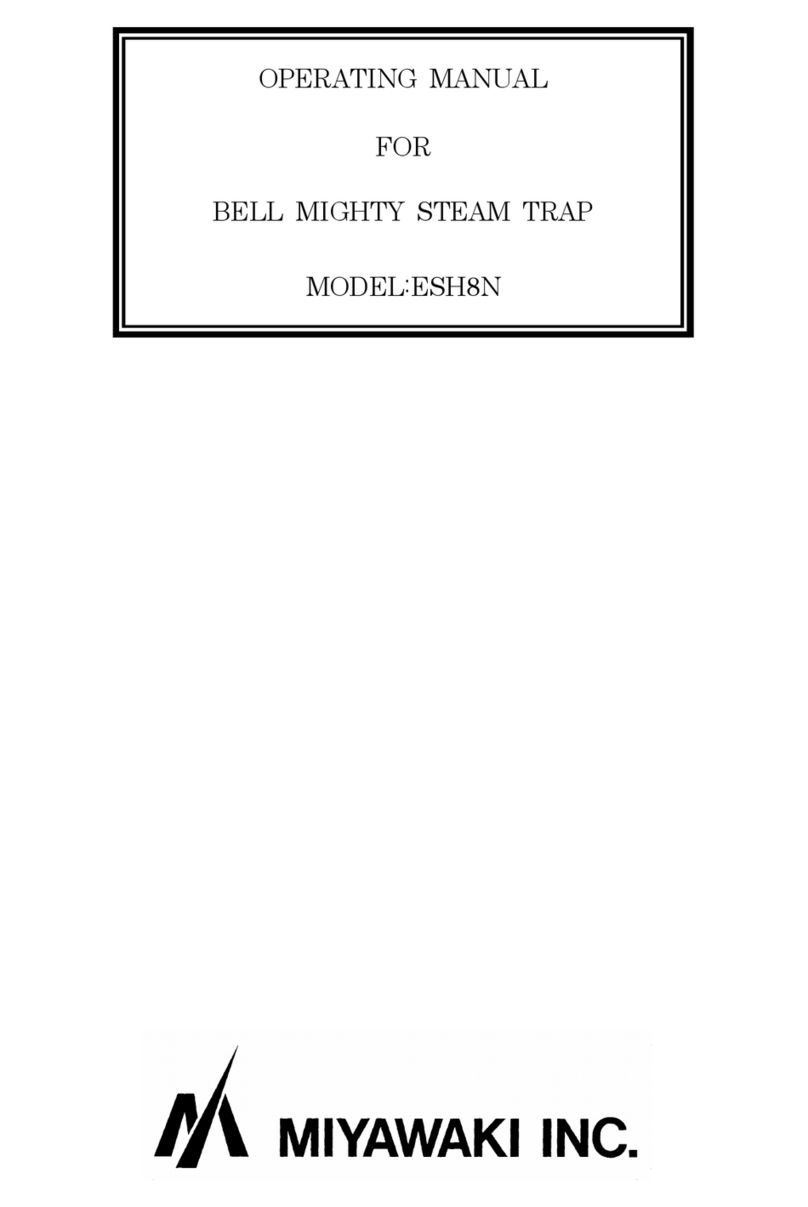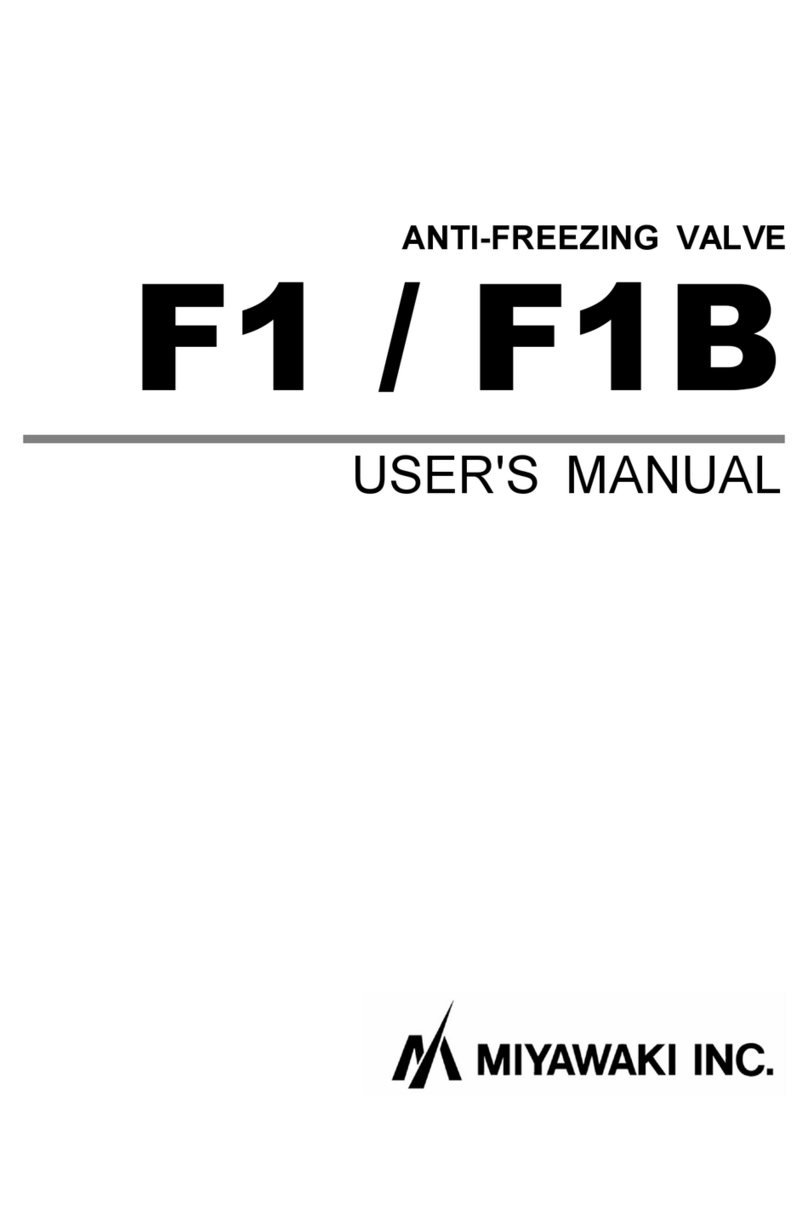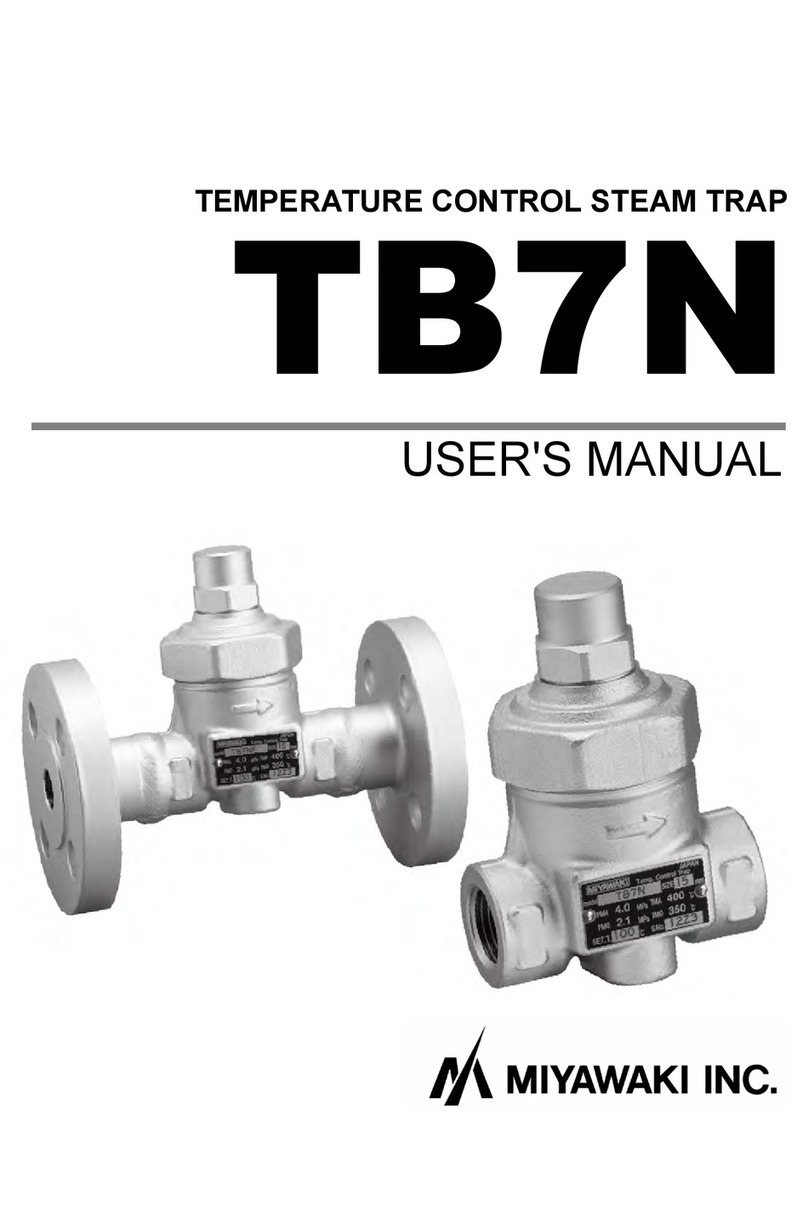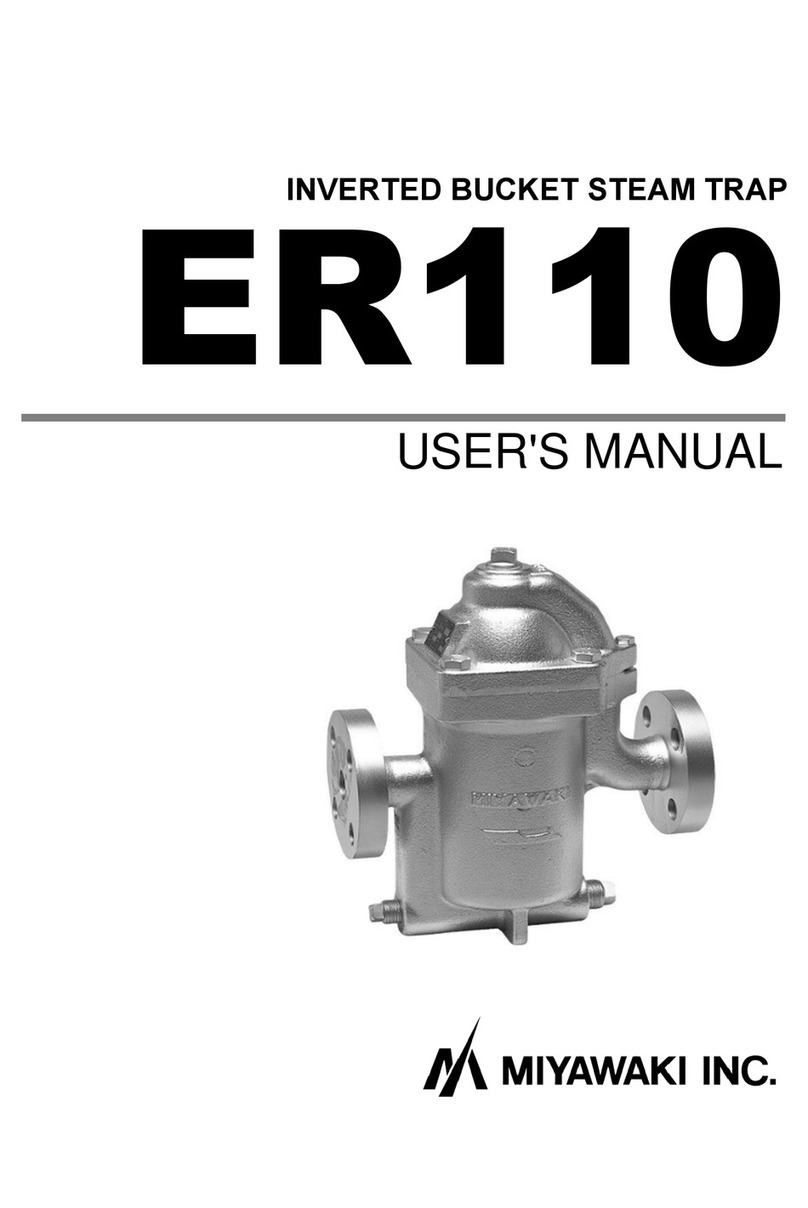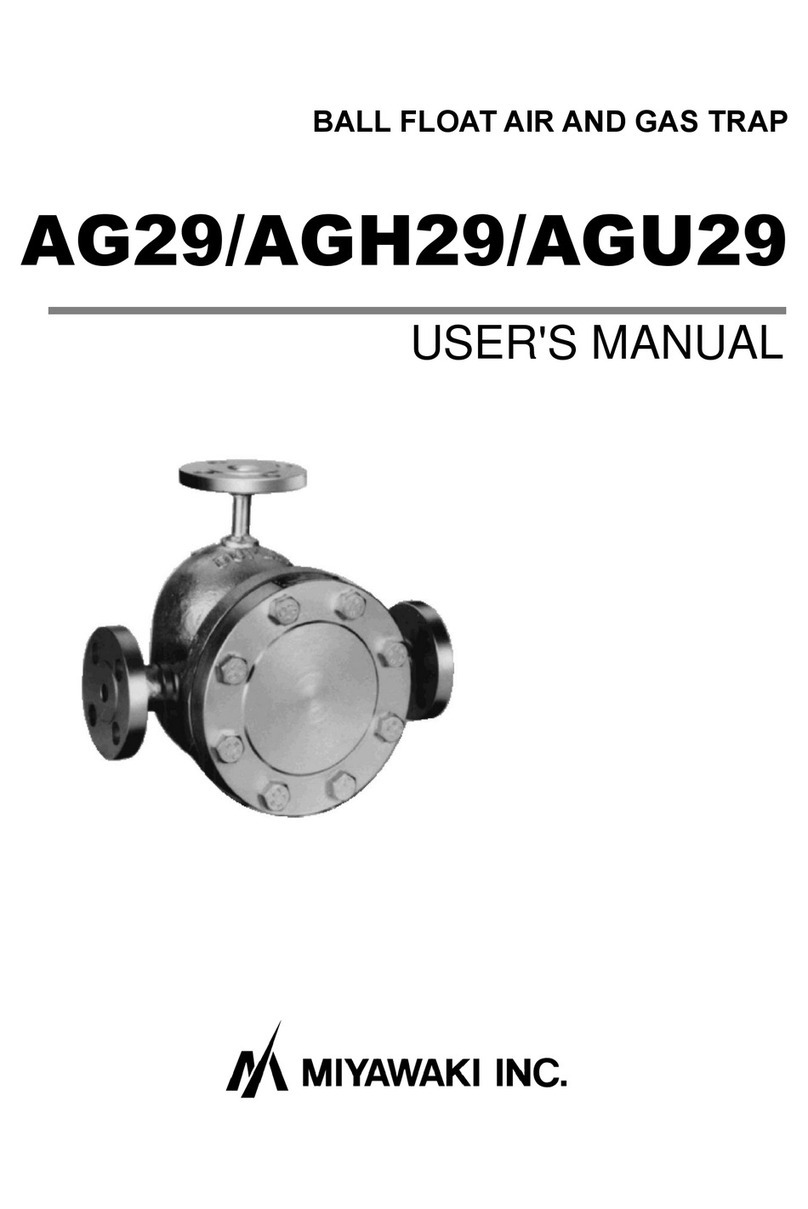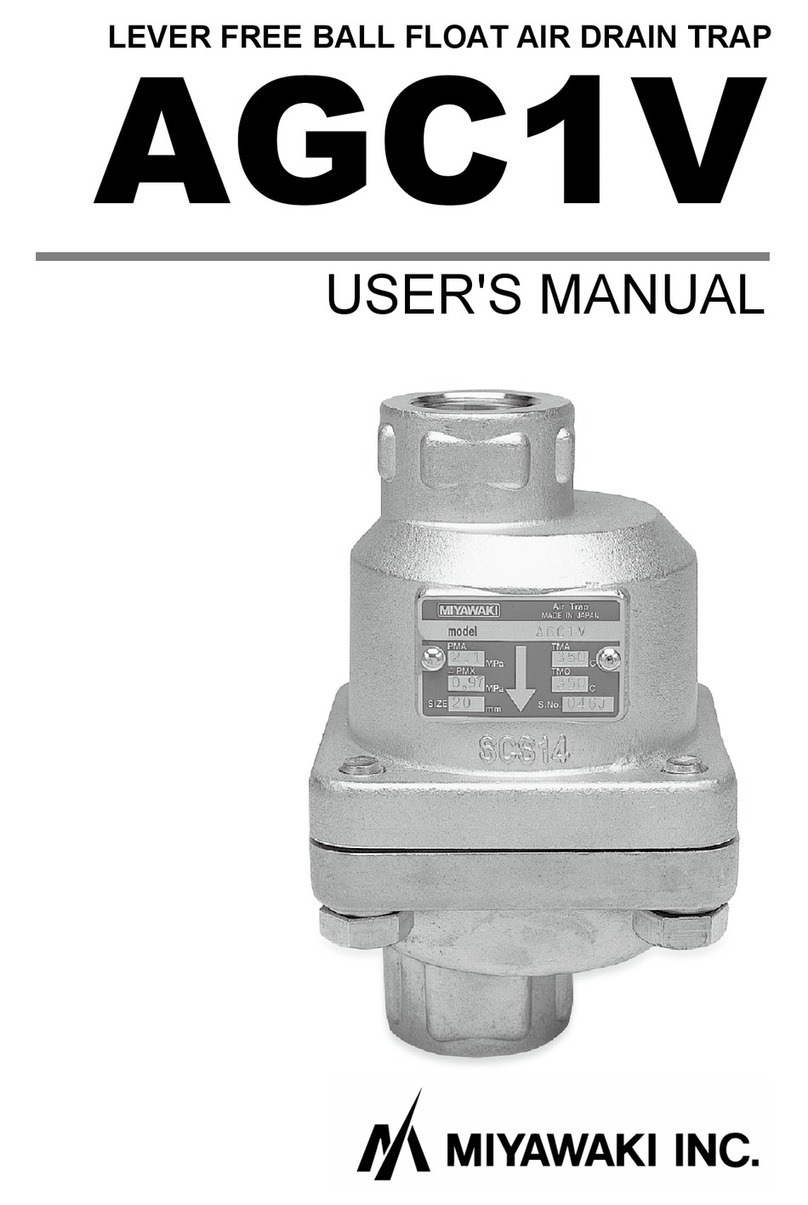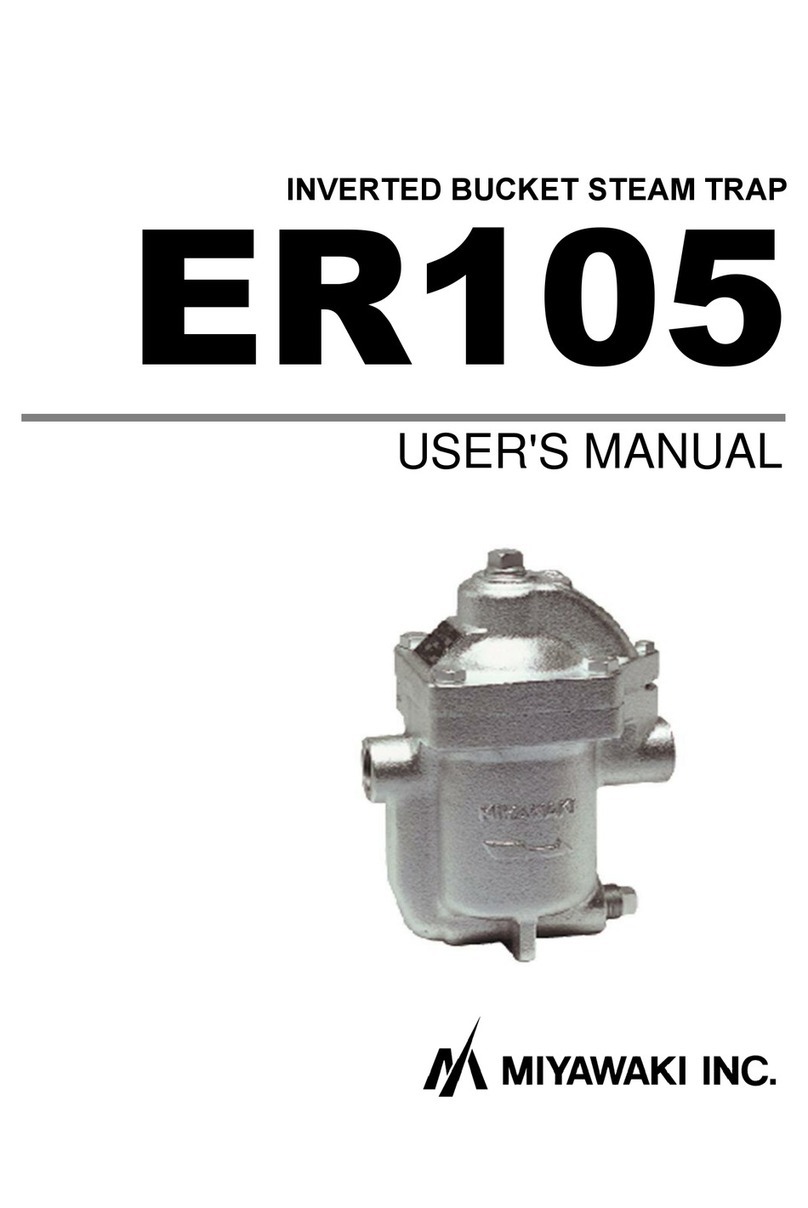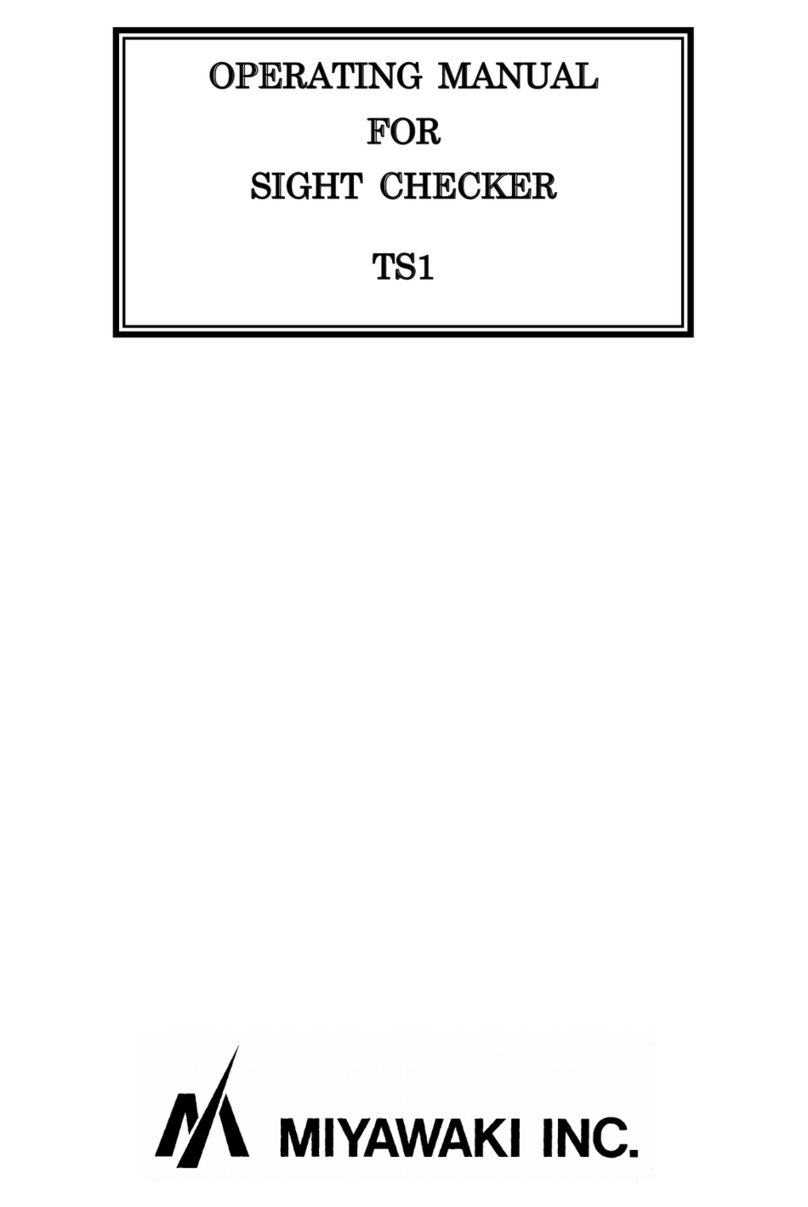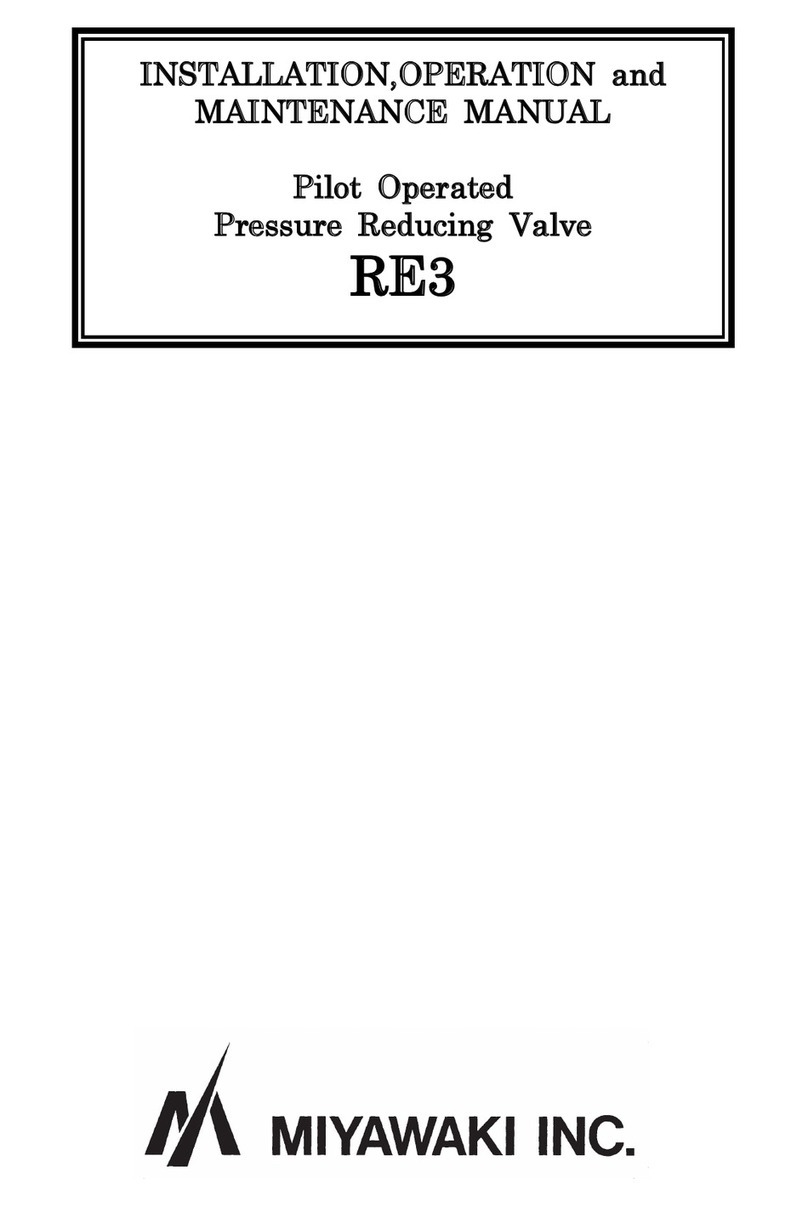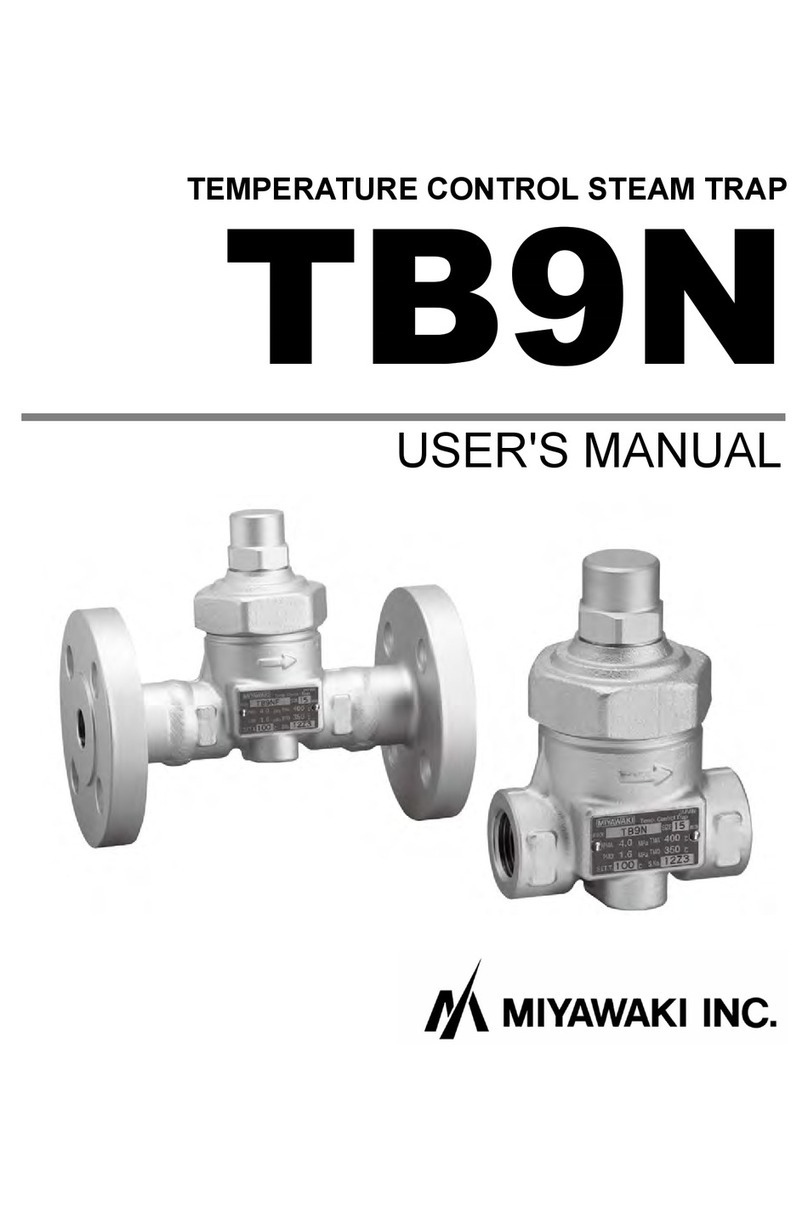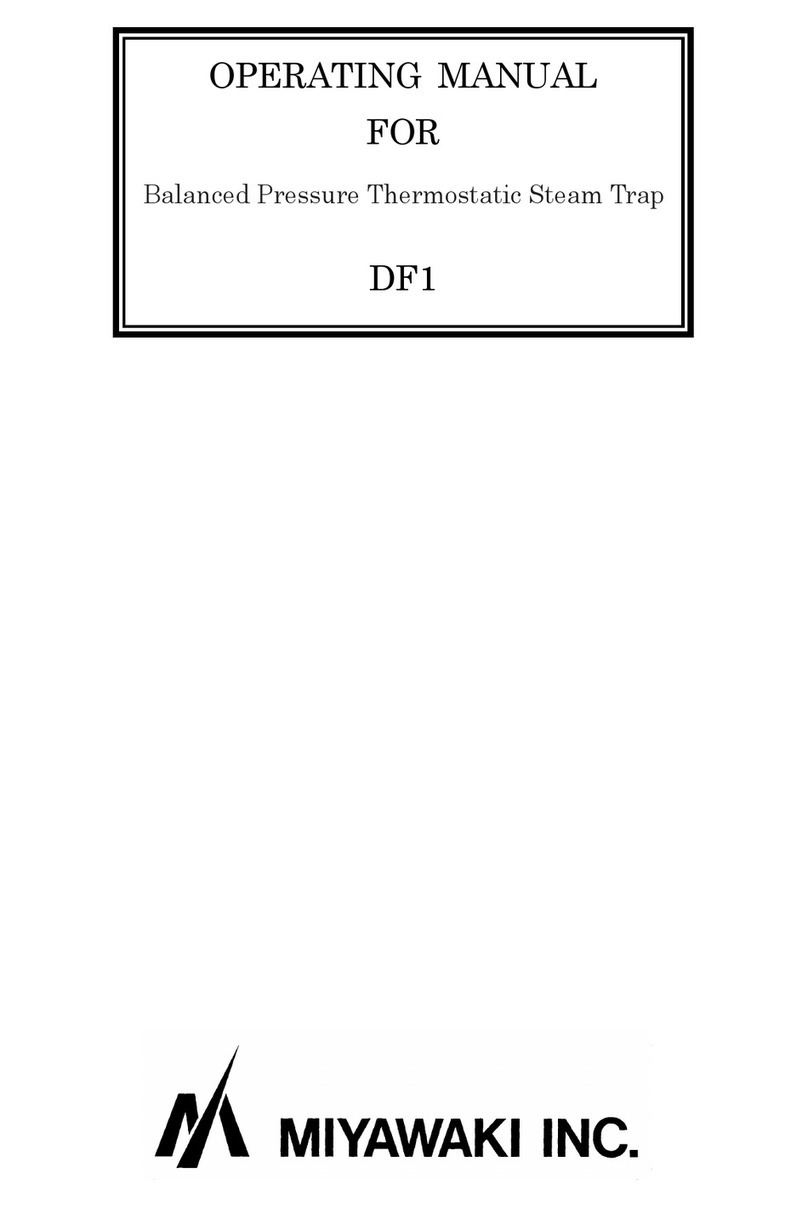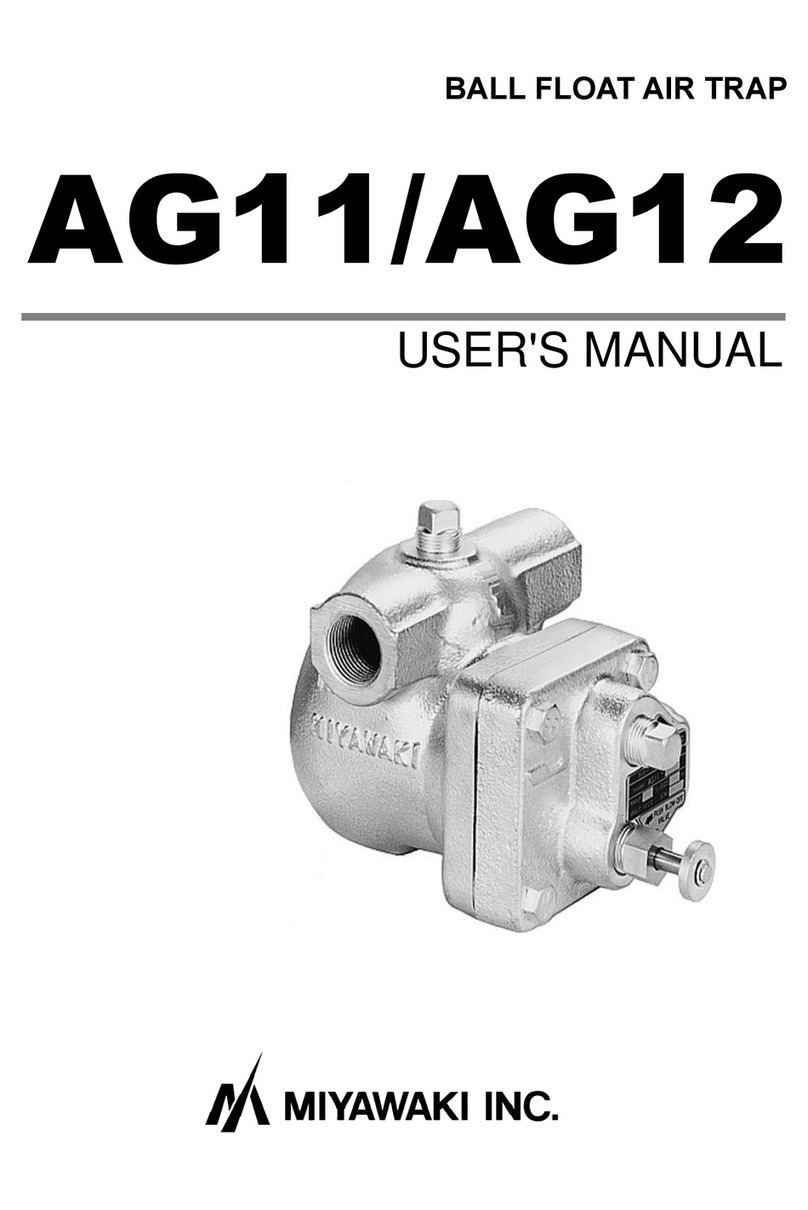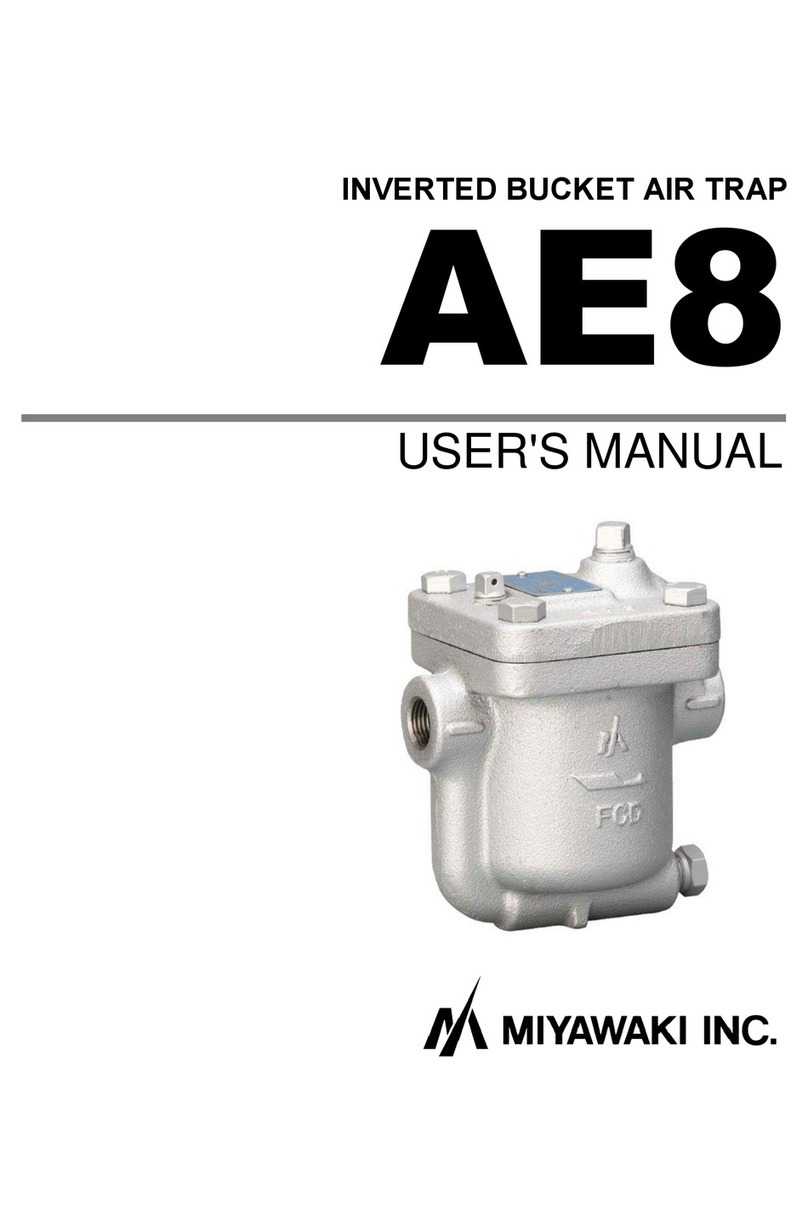
- 3 -
4. Precautions for piping
1) Take care to prevent the condensate from entering the pressure reducing valve. If condensate
flows into the pressure reducing valve, it can cause hunting and other phenomena and may
damage the sealing surface of the valve and valve seat, as well as the sliding section.
If condensate is expected to flow in the pressure reducing valve, install a separator, steam trap, or
others on the inlet side of the pressure reducing valve to prevent flow of condensate as much as
possible.
2) Take care to prevent rust, scale, and other foreign substances from flowing in the pressure
reducing valve.
Flow of a foreign substance in the pressure reducing valve can cause leakage (increase in the
secondary pressure) and other problems.
In order to keep foreign substances out, install the ancillary strainer (100 mesh) on the inlet side of
the pressure reducing valve. Install the strainer in a lateral direction (in the case of horizontal
piping) to prevent the stagnation of condensate.
Remove initial low-temperature condensate and foreign substances from the piping by blowing the
pipes before passing steam through the pressure reducing valve.
3) When a manual valve, solenoid valve, or other valves on the outlet side of the pressure reducing
valve are kept closed (dead-end service), install a steam trap between the pressure reducing valve
and the outlet valve to prevent water hammer and abnormal operation (increase in the secondary
pressure) of the pressure reducing valve.
4) Make the straight section of the piping upstream and downstream of the pressure reducing valve as
long as possible (more than ten times of the pipe diameter is recommended).
5) Avoid piping that is drastically narrowed upstream or downstream of the pressure reducing valve to
prevent pressure drop as much as possible.
6) Install a safety valve on the secondary side of the pressure reducing valve for safety and to prevent
damage of equipment and devices.
If a safety valve cannot be installed, use equipment or devices which have withstand pressure more
than equal to the primary pressure.
7) When the pressure reducing valve is not used for a long time, remove condensate from the piping
completely.
Before installing the product, open both isolation valves and the bypass valve,
if one exists, to blow out any debris or dirt inside the pipeline.
You can take off the plug at the bottom of the body and
install a blowdown valve or a steam trap.
Note) Before blowing the pressure reducing valve, adjust
its handle to the zero point (the adjusting spring is free)
and close the stop valve on the outlet side.
Take off the plug at the bottom of the
body and connect the inlet pipe.
Put the removed plug to the inlet of the
bod y.
Note) Be careful not to let dust or scale
fall from the screen when checking the
strainer.
<Example of horizontal piping>
<Example of L-shaped piping>
3


